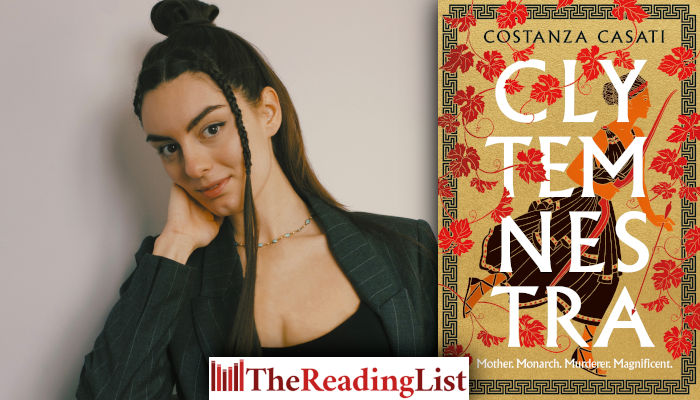Author Costanza Casati on bringing to life a Greek legend in her novel Clytemnestra
More about the book!

Costanza Casati’s Clytemnestra is a blazing novel set in the world of Ancient Greece and told through the eyes of its greatest heroine.
This is a thrilling tale of power and prophecies, of hatred, love, and of an unforgettable Queen who fiercely dealt out death to those who wronged her.
Read the author on the genesis of the book.
‘I fell in love with this character 10 years ago and wanted others to fall in love with her too.’
One of the things I loved the most about writing Clytemnestra was bringing to life a female character who is ambitious and loyal, powerful and beloved. I fell in love with this character 10 years ago and wanted others to fall in love with her too. Clytemnestra has been portrayed as an adulteress, a jealous, power-hungry ruler and murderess for centuries, so I really enjoyed playing with these stereotypes and peeling them away to show the woman under them.
One of the hardest parts (which was also incredibly fascinating) was writing the more well-known characters from the myth in a way that felt both fresh and true to the sources. Helen and Odysseus, for instance, are incredibly famous, but I felt like I needed to write them in a way that felt familiar but also unexpected. The same challenge obviously came with the plot. For the people who know the myth, they already know how Clytemnestra’s story plays out, so how do you make it interesting and surprising? I tried to bring to light elements and details that were already hidden in the sources and play with them a little bit. Finally, one of the things I loved the most while writing was exploring Clytemnestra’s family dynamics.
There are two kinds of research I like to do. There is the more practical, specific kind, which I do in parallel with writing a scene – Which towels did they use? Was soap a thing? Which frescoes were common in Mycenae? What did a typical meal look like in Sparta? – and then there is the ‘cultural’ research, which you must do before writing a novel, and which, in my opinion, is essential for writing historical/mythical fiction. It was very important for me to truly live inside my characters’ heads, experience the world through their eyes. So, for instance, a more broad, ‘cultural’ research question would involve things such as: How was guilt perceived in Mycenaean Greece? Did the Greeks fear death? How were women treated in Sparta? Did forgiveness exist for these people? Those are things that must be woven seamlessly into the narrative, but they also must be clear to a contemporary reader. That balance, between recreating the way in which ancient people thought, and making it accessible to contemporary readers, is the most important thing for me.
I would absolutely call this a feminist retelling. ‘Feminist’ because I wanted to write the story of a woman who took part in the action, whose narrative is as epic as the ones of the men and heroes. Besides, Clytemnestra isn’t the only powerful woman in my novel: it was essential to me that I wrote a story with a cast of female characters that were clever and complex, flawed and unforgettable.
The women of the Greek myths are incredibly heroic – think Alcestis, Antigone, Ariadne, Circe – and yet throughout the centuries they have been burdened with cultural and ethical codes that make them helpless victims, or, in the case of Clytemnestra and Helen, misogynist archetypes: murderesses and lustful whores. Now is the time to retell their stories.
~~~
This article was originally published in The Penguin Post, a magazine from Penguin Random House South Africa.
Categories Fiction International
Tags Clytemnestra Costanza Casati Penguin Random House SA The Penguin Post
